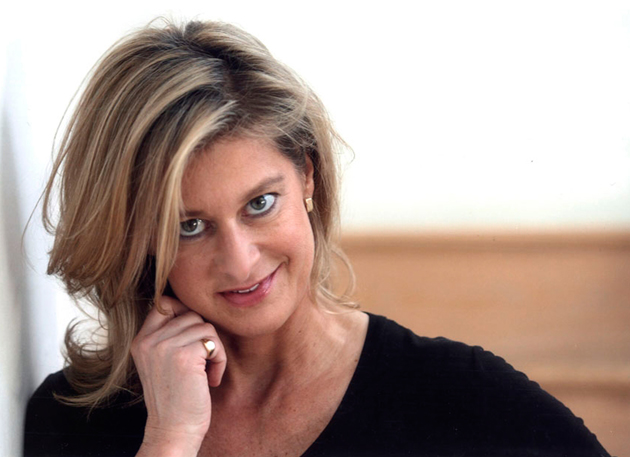Friday 10th April 2015Artist Spotlight: Alison Jackson
It's hardly any secret that modern society is completely obsessed with celebrity. It's impossible to browse the net or even stand in line at the grocery store without being constantly bombarded with the latest gossip about who did what to whom, now with 5 extra hours of analysis and speculation. It's frenetic and never-ceasing, and completely and utterly unavoidable. Enter Alison Jackson, a prominent photographer whose entire body of work is based on (you guessed it!) celebrities. Perhaps more accurately, however, her work is about our obsession with them.
Jackson's work, which has been prominently featured in England and around the world since the late 90s, creates fake paparazzi photos using celebrity lookalikes. So carefully and meticulously created, they regularly fool the celebrity-obsessed hordes, and that has only become even more prevalent thanks to the rapid-fire sharing that happens online, usually with little-to-no fact checking or even basic attempts at locating the image source.
Speaking to Complex magazine, Jackson said, "I’m fascinated by how people get so emotional and so involved in celebrities when they haven’t ever met them. There’s no close relationship, it’s purely a mediated one, and it runs as an industry. The publicists run it, they make money out of it, the celebrities get a fantastic lifestyle from being famous, the magazines and the TV shows make a lot of money from it, and everyone aspires to it."
Jackson's work originally caught the public imagination with faked photos of Princess Diana and Dodi Al-Fayed, and their supposed baby, but has since gained serious steam, as she won a prestigious BAFTA award for her work on the BBC2 comedy series Doubletake, based on similar principles to her own still image work.
Still speaking to Leigh Silver of Complex, she said, "We're used to seeing celebrities as two-dimensional images on the Internet, in magazines, or on television, so when the public sees the photograph, it doesn’t really matter whether it’s the real person or not. The celebrity can be replaced, and I suppose that’s what I am doing with my photography and film."
An excellent point, and one that will constantly need to be made until we finally have a meaningful dialog about media literacy, self-awareness and the value of our own lives when compared to the idealized perception of a stranger's life we've never even encountered. Take a look at more of the works of Alison Jackson at her website,
alisonjackson.com.
Posted on April 10th 2015 on 05:42pm
0 Comments
Sunday 02nd February 2014When Celebrity Art Gets Weird: #IAMSORRY

Film is undeniably one of the great art forms of the modern world. Whether you're looking at an intricate Scorsese drama or a visual feast like Samsara, films have the power to move us, to change the way we look at the world - and that's one of the best quick working definitions for art. However film is unlike most other art in that it often depends on actors to create its emotional power. The human brain seems hardwired for appreciation of celebrity, and when this starts to merge with a desire to create art, things can sometimes get pretty weird.
Case in point: actor Shia LeBeouf, most recently star of the Transformers film series among others, has had some troubles of late. Being accused (apparently accurately) of plagiarising the work of artist Daniel Clowes in a short film HowardCantor.com which debuted, astonishingly enough, at the May 2012 Cannes Film Festival, LaBeouf has repeatedly tried to apologize to the artist whose work he took nearly verbatim. After claiming simply to have been 'lost in the creative process', he decided to take a decidedly different tack to the apology.
Well, that's not quite true - first he decided to try skywriting an apology, despite the fact that Clowes wasn't anywhere near the locations it would be visible. He then moved on to a bizarre installation/performance art piece, entitled #IAMSORRY (the use of hashtags appears to be a reference to the fact that many of the revelations about this story appeared on Twitter). The exhibit is a arguably an art stunt more than an actual installation piece, although these lines are often hard to distinguish and frequently depend on the mood of the reviewer. Despite a collaboration with artists Luke Turner and Nastja Säde Rönkkö, critical reception of the work - what little there was of it - seems to have been generally negative.
The exhibit consists of Shia LeBeouf sitting in an empty room with a paper bag over his head. But naturally, he's not there all the time, despite having posted hours of 11AM to 6PM Tuesday through Sunday. After lining up outside often for hours at a time (without any guarantee of being admitted at all), visitors/participants are checked over by security with a metal-detector and passed one at a time into an antechamber filled with icons related to LeBeouf's previous work. Note that's not 'one by one', but rather one at a time - only one visitor is ever in the room with him at once. The length of time spent in the room is dependent on the wills and interest of both parties, not any particular set of rules.
Does this make for a decent art installation? Does it make for art at all? It's hard to say. Does it make a good apology for plagiarism? Arguably it just makes things worse, as many have pointed out similarities between #IAMSORRY and a performance piece by artist Marina Abramovic that employed a nearly identical premise - just without the hashtags.
Posted on February 02nd 2014 on 06:03pm
0 Comments
 It's hardly any secret that modern society is completely obsessed with celebrity. It's impossible to browse the net or even stand in line at the grocery store without being constantly bombarded with the latest gossip about who did what to whom, now with 5 extra hours of analysis and speculation. It's frenetic and never-ceasing, and completely and utterly unavoidable. Enter Alison Jackson, a prominent photographer whose entire body of work is based on (you guessed it!) celebrities. Perhaps more accurately, however, her work is about our obsession with them.
It's hardly any secret that modern society is completely obsessed with celebrity. It's impossible to browse the net or even stand in line at the grocery store without being constantly bombarded with the latest gossip about who did what to whom, now with 5 extra hours of analysis and speculation. It's frenetic and never-ceasing, and completely and utterly unavoidable. Enter Alison Jackson, a prominent photographer whose entire body of work is based on (you guessed it!) celebrities. Perhaps more accurately, however, her work is about our obsession with them. Film is undeniably one of the great art forms of the modern world. Whether you're looking at an intricate Scorsese drama or a visual feast like Samsara, films have the power to move us, to change the way we look at the world - and that's one of the best quick working definitions for art. However film is unlike most other art in that it often depends on actors to create its emotional power. The human brain seems hardwired for appreciation of celebrity, and when this starts to merge with a desire to create art, things can sometimes get pretty weird.
Film is undeniably one of the great art forms of the modern world. Whether you're looking at an intricate Scorsese drama or a visual feast like Samsara, films have the power to move us, to change the way we look at the world - and that's one of the best quick working definitions for art. However film is unlike most other art in that it often depends on actors to create its emotional power. The human brain seems hardwired for appreciation of celebrity, and when this starts to merge with a desire to create art, things can sometimes get pretty weird.



